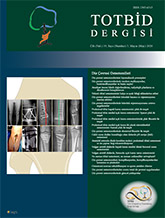
Asymmetric joint load distribution in the knee due to malalignment can cause increased loads on the opposite compartment and induce progressive cartilage degeneration, and the results are pain and dysfunction of daily activities in young-middle aged patients. Osteotomies correct the limb deformity by shifting the mechanical axis partially to the opposite side and decreasing the contact pressure on the affected cartilage. This can provide the adequate mechanical environment for preventing further degeneration of the articular cartilage and they may delay or in some cases prevent the need for patients to undergo knee arthroplasty procedures. Early weight bearing is possible with strong plate-screw constructions, gaining early movement clearance contributes to recovery and a quicker return to normal activities, and early range of motion exercises positively affects cartilage regeneration. Whether regeneration of cartilage with osteotomies is a controversial issue, some studies have indicated that regeneration is promoted with decreased loading in cartilage. In this review, the changes seen in the cartilage after osteotomy with or without the cartilage repair techniques like abrasion, subchondral drilling, microfracture, autologous chondrocyte implantation, mosaicplasty, platelet-rich plasma and stem cell therapies are summarised with the studies considering clinical, radiological, second look arthroscopy and histological evaluations. According to these studies, when osteotomy is performed alone or with additional cartilage regenerative procedures, the degenerated cartilage could be covered partially or totally by newly regenerated cartilage.